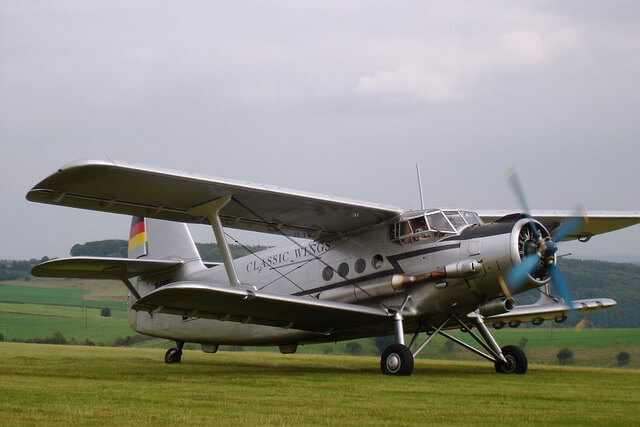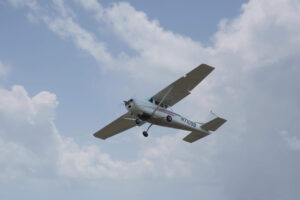Introduction
Embarking on a career as a commercial pilot is an exhilarating journey that combines technical skill, dedication, and a passion for aviation. A commercial pilot license (CPL) opens the door to a world of opportunities, allowing individuals to fly for compensation or hire. This comprehensive guide delves into every aspect of obtaining a CPL, from initial training and educational requirements to career prospects and financial considerations.
Understanding a Commercial Pilot License
A commercial pilot license is a credential that permits the holder to act as a pilot of an aircraft and be compensated for their work. It represents a significant step up from a private pilot license, requiring more advanced training and stricter standards.
The Importance of a Commercial Pilot License
Obtaining a CPL is essential for anyone aspiring to pursue a professional career in aviation. It serves as a foundation for further certifications and ratings, such as becoming an airline transport pilot (ATP) or a flight instructor.
Educational Requirements
High School Diploma or Equivalent
The first step towards a CPL is obtaining a high school diploma or an equivalent qualification. A strong background in mathematics, physics, and English is advantageous.
Ground School Training
Ground school provides the theoretical knowledge required for piloting an aircraft. Subjects covered include aerodynamics, navigation, meteorology, and aviation regulations.
Flight School Selection
Choosing the Right Flight School
Selecting the right flight school is crucial. Factors to consider include the school’s reputation, the quality of its instructors, the condition of its fleet, and its safety record.
Part 61 vs. Part 141 Schools
Flight schools in the United States operate under two different sets of regulations: Part 61 and Part 141. Each has its pros and cons, and the choice depends on individual preferences and circumstances.
Training Requirements
Private Pilot License (PPL)
Before pursuing a CPL, one must obtain a private pilot license, which involves a minimum of 40 flight hours, including both dual and solo flights.
Instrument Rating
An instrument rating (IR) is required for a CPL, allowing pilots to fly in various weather conditions and under instrument flight rules (IFR).
Commercial Pilot Training
Commercial pilot training involves a minimum of 250 flight hours, including specific types of flights, such as cross-country and night flights.
Multi-Engine Rating
For those planning to fly multi-engine aircraft, obtaining a multi-engine rating is necessary.
Cost Considerations
Tuition Fees
The cost of obtaining a CPL can vary widely, typically ranging from $30,000 to $90,000, depending on the flight school and the type of aircraft used for training.
Additional Expenses
Additional costs may include medical exams, written exams, checkrides, and living expenses during training.
Financing Options
Various financing options are available, including student loans, scholarships, and grants. Some airlines also offer cadet programs that provide financial assistance in exchange for a commitment to work for the airline after graduation.
Examinations and Tests
Written Exam
The written exam tests knowledge in areas such as navigation, weather, and FAA regulations. A passing score is required to proceed to the practical test.
Practical Test (Checkride)
The checkride is the final step in obtaining a CPL, involving both an oral exam and a flight test with an FAA-designated examiner.
Maintaining and Upgrading Your License
Currency Requirements
Pilots must meet specific currency requirements to maintain their CPL, including a minimum number of flight hours and periodic medical exams.
Additional Certifications and Ratings
Pilots can enhance their career prospects by obtaining additional certifications and ratings, such as a certified flight instructor (CFI) or an airline transport pilot (ATP) license.
Career Opportunities
Airline Pilot
One of the most sought-after positions for CPL holders is an airline pilot. This career offers opportunities to travel the world and typically provides a lucrative salary and benefits package.
Charter and Corporate Pilot
Charter and corporate pilots fly private individuals or companies, often enjoying more flexible schedules compared to airline pilots.
Flight Instructor
Becoming a flight instructor is a common path for new CPL holders, allowing them to gain additional flight hours and experience while teaching others.
Agricultural Pilot
Agricultural pilots, also known as crop dusters, fly aircraft equipped with spraying equipment to apply pesticides and fertilizers to crops.
Emergency Medical Services (EMS) Pilot
EMS pilots transport patients and medical personnel to and from hospitals, often flying helicopters equipped for medical emergencies.
The Future of Commercial Aviation
Technological Advancements
Technological advancements, such as improved avionics and the development of electric and autonomous aircraft, are set to revolutionize the aviation industry.
Sustainability Initiatives
The aviation industry is increasingly focused on sustainability, with efforts to reduce carbon emissions and develop more eco-friendly aircraft.
Job Market Outlook
The demand for commercial pilots is expected to grow in the coming years, driven by the expansion of airlines and the retirement of the current generation of pilots.
Conclusion
A career as a commercial pilot is both challenging and rewarding. With the right training, dedication, and passion for aviation, aspiring pilots can achieve their dream of flying professionally. This ultimate guide provides a comprehensive roadmap for anyone looking to obtain a commercial pilot license and embark on an exciting journey in the skies.
FAQs
What are the minimum flight hours required for a commercial pilot license? The minimum requirement is 250 flight hours.
How much does it cost to become a commercial pilot? The cost typically ranges from $30,000 to $90,000.
What is the difference between Part 61 and Part 141 flight schools? Part 61 schools offer more flexibility, while Part 141 schools follow a structured curriculum approved by the FAA.
Can I obtain a CPL if I wear glasses? Yes, as long as your vision is correctable to 20/20.
What types of aircraft can I fly with a CPL? A CPL allows you to fly single-engine and multi-engine aircraft, provided you have the appropriate ratings.
Is it possible to work as a pilot while still in training? Some students work as flight instructors while completing their training to gain experience and flight hours.




